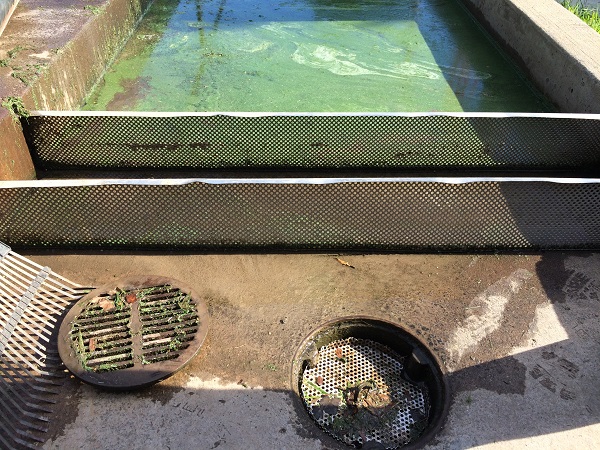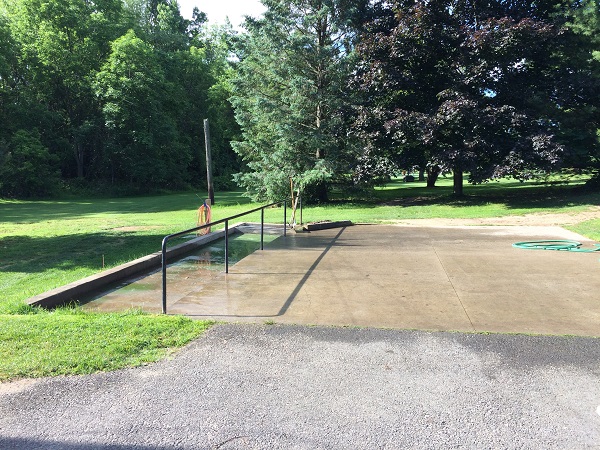Visit the NYS BMP Youtub channel to view the new case study video on the low cost washpad demonstration conducted at Locust Hill Country Club: https://tinyurl.com/y8m8o44t.

Visit the NYS BMP Youtub channel to view the new case study video on the low cost washpad demonstration conducted at Locust Hill Country Club: https://tinyurl.com/y8m8o44t.

Following the publication and launch of the NYS BMP website, an extensive survey of superintendents in the state was conducted to assess level of competency regarding BMPs and existing alignment of properties with established BMPs. The survey suggested priority areas for our education and outreach efforts, including maintenance facilities and organic- and chemical-waste management and containment. For example, the need for affordable equipment-washing solutions was obvious as well as observations during course visits in NY State.
To address this need, we have initiated a demonstration project on equipment wash pads in partnership with the Locust Hill Country Club in Rochester, Cornell University, the New York State Pollution Prevention Institute at the Rochester Institute of Technology (RIT), and the University of Buffalo. Prior to the demonstration, Superintendent Rick Slattery worked with RIT on a NYS Department of Environmental Conservation (NYSDEC)-funded feasibility study that collected baseline information for the design of a new wash pad system, as summarized in our case study.
Locus Hill Country Club is a perfect site for this demonstration project for two reasons: the commitment of Superintendent Slattery to environmental stewardship and a real-world issue that needs to be addressed. Slattery has been nationally recognized for his commitment and has been awarded the NYSDEC Environmental Leaders award. He has also shepherded Locust Hill through the Audubon International certification process to achieve Certified Cooperative Sanctuary status.
The real world issue addressed in the demonstration project is the volume of wash water generated by Locust Hill. Being located at the edge of the suburban-rural divide, houses surround the Locust Hill course. Proximity to the equipment wash pad drainage area resulted in adjacent homeowner’s complaints of odors from the discharge. Because functionally organic debris (clippings, leaves, etc.) was already strained from the wash water, addressing the amount of water being used in washing operations is the solution to eliminating odor issues
This demonstration project is utilizing the feasibility study results for the design of an affordable equipment wash pad system that is estimated to reduce water use by up to 90%. Funded by a Turf Environmental Stewardship Fund grant, a prototype wash pad system is being built and its performance will be documented.
While construction is under way, Locust Hill staff are already implementing two of the feasibility study recommendations: blowing off clippings before washing and using low-flow nozzles to significantly reduce water use. Construction of the new wash pad system should be complete by the end of this summer. A Cornell University case study, project report, and conference presentations will follow to provide detailed information useful to superintendents across the state.
The slide show below depicts the wash pad operations prior to the development of a prototype wash pad that will dramatically reduce water usage. We will provide a mid-construction update on this blog later this year.





